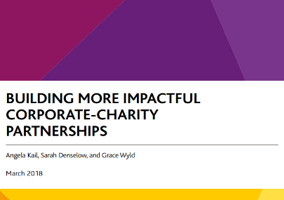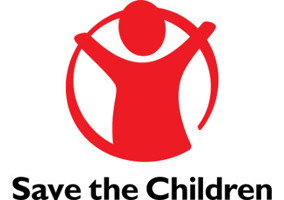Angela Kail, head of funders at NPC, talks about why there is quite a lot wrong with corporate partnerships, and explains what can be done to make them more impactful.
Last week we launched a report arguing that corporate charity partnerships need to radically change to be impactful. There is a favourable headwind for good corporate charity partnerships—more and more charities are looking to explore this area, and more companies are becoming interested in their social as well as financial impact. But the people we spoke to suggested that, at the moment, there is quite a lot wrong with these partnerships.
Volunteering is a bone of contention—many corporates want team building days and think that volunteering is free; the measurement doesn’t seem to work for anyone and there is a lot of feeling that the relationship isn’t as honest as it needs to be.
Our research revealed that one of the key elements to changing corporate charity partnerships is to make the relationship more equal. We heard a lot about the need for both sides to be braver and more honest in conversations—be clear about motivations, what you want, what you can offer and importantly what you can’t give.
This might mean having conversations about the cost of the team building volunteer days that so many companies like, and whether that cost can be met by the company rather than the charity. Or being honest that the measurement doesn’t give the company what it is looking for in terms of clarity of communications.
Large corporates often don't have the expertise
Most large corporates are complicated beasts comprising teams of people who have very different skills. This is great. It means that they can help charities in lots of different ways—providing money, providing HR expertise, data skills, space or contacts. The range of skills and assets that corporates could give is huge. But what they often don’t have is expertise in either the charity sector or the social issue in which they would like to be funding. This means both sides can be introducing ideas about how to collaborate that don’t really work for either party. This can lead to a lot of wasted effort.
One idea to combat this is induction days—where at the start of a relationship both sides invest in trying to tell the other side how they work. National Grid told us that it felt it was its responsibility to ensure that its partners understood the skills and assets it has and therefore what it could offer a charity. Charities also enjoyed having the opportunity to explain a bit more about the issues they were working on and how they tackled them.
How do you create a culture of corporate charity partnerships?
At the launch of the report, an audience member asked how you create a culture of corporate charity partnerships. Jamie Masraff, project director at Onside Youth Zones, discussed how a business minded approach needs to be led by the board. Onside’s model uses highly local business and community partnerships, so the approach needs to be throughout the organisation. Some of the charities that we spoke to had been really successful in developing this from top to bottom.
Part of this is about making teams see where a corporate partnership can have a benefit that another type of funding just can’t. The Marks & Spencer and Breast Cancer Care partnership is a good example. Breast Cancer Care’s clients were annoyed about the difficulty of finding underwear after a mastectomy so Breast Cancer Care worked with M&S to develop bras for women who had been through breast cancer. That delivers a real benefit that wouldn’t have been possible with funding from a foundation or philanthropist. Similarly, many corporates told us about having new markets or better quality products introduced through the expertise of their charity partners.
Tensions created within a charity
One of the big tensions that we heard about was between the fundraising team and the programme team within a charity. Promising something and then not being able to deliver it is one of the things that creates mistrust—so you need to be sure that a programme team can deliver before committing to anything. You also need to make sure that everything is properly costed—these days almost all charities include on-costs, but what about the cost of a specific measurement system or liaising with PR departments. It can be easy to make a programme team feel that it is not worth engaging with a corporate, if they don’t see the benefits but do see the costs.
When you do have a culture that is open to corporate partnerships throughout the organisation it is easier to be more creative. One of the things we continually heard is that there needs to be a more creative approach to volunteering opportunities. The old ‘paint-and fix-days’ aren’t working for many charities and skilled volunteering isn’t what all corporate staff want to do, but few charities have come up with good alternatives. Those that had, had normally involved a lot of people throughout both organisations in developing approaches.
Throughout our research there was a lot of hope that relationships could get better and really take advantage of what both sides can offer. Although we don’t think anyone has cracked it, our report highlights a number of approaches that people are taking to make their partnerships more impactful.
The report, Building more Impactful Corporate-Charity Partnerships, is available here.
Angela Kail is Head of Funders at NPC
|
Related articles












